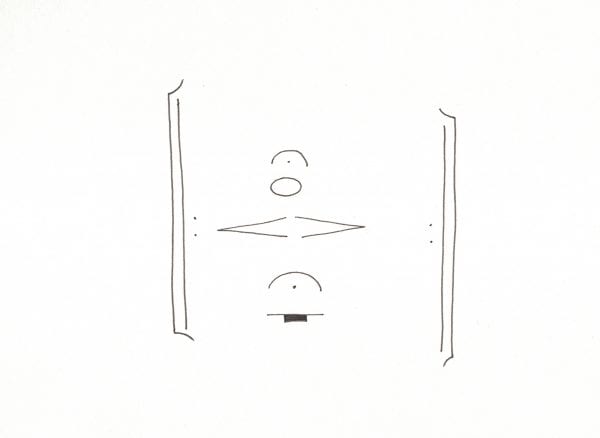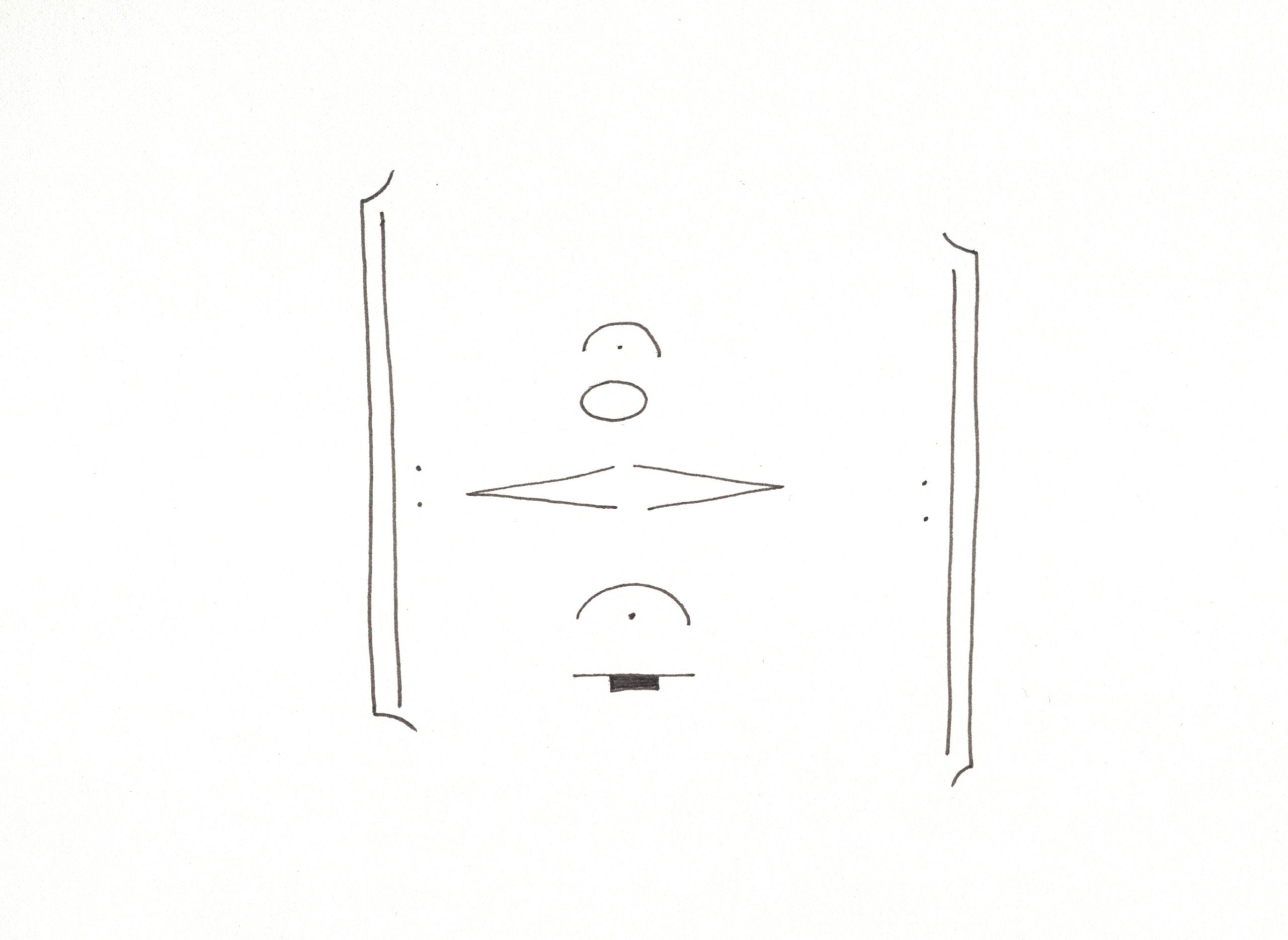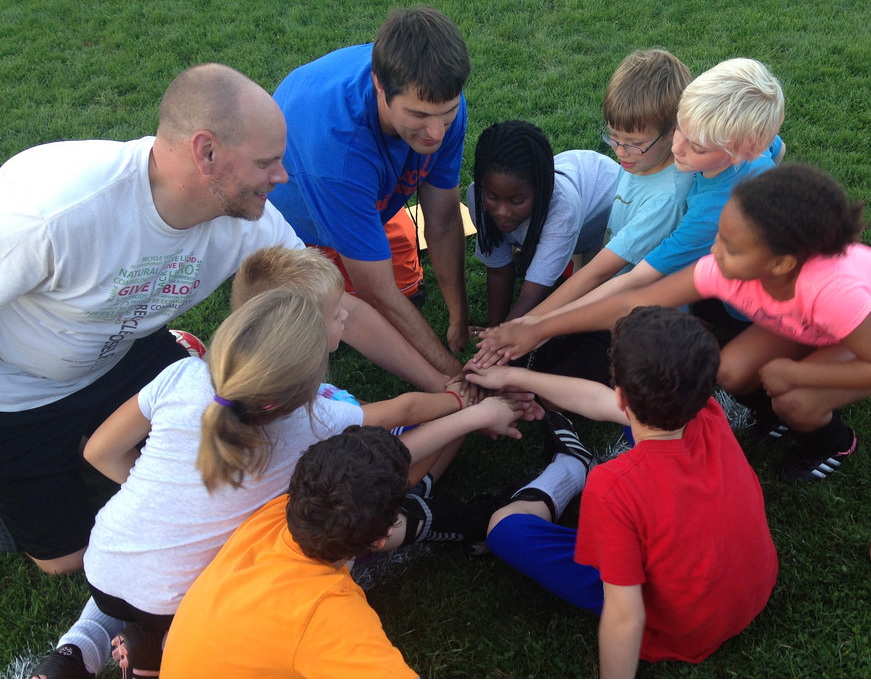Guest post by Louise Campbell, Artist in Schools
What strategies can be used in the arts classroom to shift focus from ‘getting it right’ to exploring potential? Educators often refer to this as ‘fostering a growth mindset’. As an Artist in Schools, my first task in a music classroom is to use the skills students have developed with their teachers in a way that is surprising. I do this by setting up games. Games have rules, giving everyone clear guidelines that govern how and what to play, making it easy for everyone to participate, in addition to being fun.
The following is one of my favourite game pieces for use in the music classroom. It is a great start to a creative process, since long tones are a fundamental skill practiced in most music classrooms. The game starts out in a way that sounds familiar, and quickly evolves in surprising directions. Due to the process inherent in the game, the students can take the piece in any number of directions, leading them to more unfamiliar sounds and ways of playing.
Sound and silence By Louise Campbell

Instrumentation: for 4+ musicians playing pitched instruments
Instructions:
There are two choices of how to play:
- a long tone( crescendo and decrescendo)
- a silence
Long tones can be any pitch in any register on the instrument.
The long tones and silences can overlap in any way, shifting textures and timbres as different instruments come in and drop out at various times.
The next stage of this game is to consider pitch. Here are some variations, following the same rules as above. Musicians can play:
- An E in any octave
- Any note of a specific chord, such as C Major or E minor minor 7
- Any note of specific scale, such as pentatonic, or D Major
- Any note from a defined collection of notes, such as C, C#, D, F#
- Any note of the chromatic scale
Each of these variations sounds very different, depending on how students listen and respond to each other. The following excerpt demonstrates one version of this game as played by the Lindsay Place Music Étude students during a Culture in Schools workshop:
Audio Player
Sound and Silence,conducted by Louise Campbell. Co-composed, performed and recorded by Lindsay Place Music Etude students.
This is a fairly unusual sound for most students, and helps to create an atmosphere in which curiosity is at the forefront. In the event that a student understands the activity through a fixed mindset, this generally becomes evident when they point out a perceived ‘mistake’. Hyper-focusing on mistakes can be quite detrimental to the creative process, as it can be quite limiting to what students are willing to try.
Let’s have a look (and listen) at one way in which a mistake may be identified, the self-talk that surrounds it and the way this situation was turned into creative potential.
The following audio track is a sketch I composed, played and recorded for clarinet and loop station (N.B. Loop stations repeat exactly what you play, over and over. So if you make a mistake…)
Audio PlayerSketch for Knitting Lessons, for clarinet and loop station by Louise Campbell. In the words of a wise woman who taught me both music and knitting, ‘If you make a mistake, do it twice. Then people think you did it on purpose. They won’t be any the wiser if you don’t tell them!’
The recording session is going swimmingly until:
ME TO MYSELF: Bah. I made a mistake.
(listens to 1:55 for a few loops and remembers knitting advice: if you make a mistake, do it twice)
Hmmm, actually that’s not bad, kind of foreshadows what I’m gonna do later.
(continues process for section, building new loop)
Now to work in that mistake…
(overdubs several loops 2:35-2:50)
… yeah, cool, that works…
Whoops! I didn’t mean that.
(listens to new ‘mistake’ at 2:50)
Actually that’s pretty cool. I wonder if I can use that…
(follows process to end)
In this case, my initial reaction to making a ‘mistake’ was frustration, as can be the case with a fixed mindset. I wanted the piece to come out the way I planned it. However, on remembering the advice to make a mistake purposeful, I was able to hear the potential in the ‘mistake’, and work it into the piece. In fact, the two ‘mistakes’ featured in this piece became ‘design features’ that are now integral to the piece. If I had stopped when I made the first ‘mistake’, I would never have found out where it would lead me. Re-contextualizing the ‘mistake’ as an unexpected event with potential allowed me to listen in a way that flipped a fixed mindset to one of growth.
This is only one example of the self-talk involved in a creative process, and resembles many discussions that come up with students in the art classroom. This was how I re-contextualized a perceived mistake for myself; listening to students and their self-talk shows the best way to re-contextualize perceived mistakes and help them see and hear the potential in unexpected events.
When facilitating creativity in the arts classroom, establishing an atmosphere of curiosity and exploration is the first step to fostering a growth mindset, and lays the foundation for contextualization of ‘mistakes’ as unexpected events that provide potential for the new and unexpected. Fostering a growth mindset makes for surprising discoveries for everyone, and keeps fun and play at the center of learning, creativity and making art.
*******
Louise Campbell is an Artist in Schools. You can read her other guest posts:





What a great piece of writing this is! Fostering a growth mindset should be amongst the priorities of all teachers. I read somewhere that mistakes are beautiful when we accept to look at them. Thank you for highlighting this in the context of Art Education. However, a problem remains. Many students and teachers display a fixed mindset not only regarding art but for just about anything. How can we work with this predominant culture that wants things to be only right or wrong?
How about choosing how you respond to ‘mistakes’ in the classroom? I honestly find the unexpected fascinating, to the point that my students laugh when I hear something and say ‘Oooh, interesting!’ They know we’re in for some fun! My students will have that experience of understanding the unexpected as opportunities within the comfort of the classroom, and then take this experience with them to the rest of their lives.
This is a very good point! Student learn early that even when teachers SAY “Mistakes are good” that our actions after the mistake happens do not back up our words. Valuing mistakes as true opportunities to explore as opposed to things never to do again is what I’m taking away from your reply to Kish.